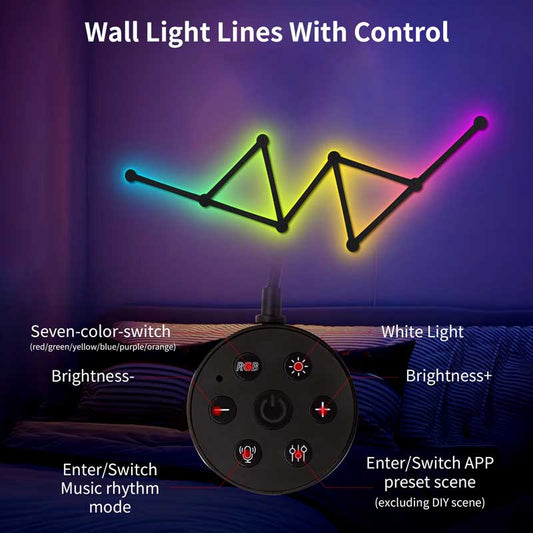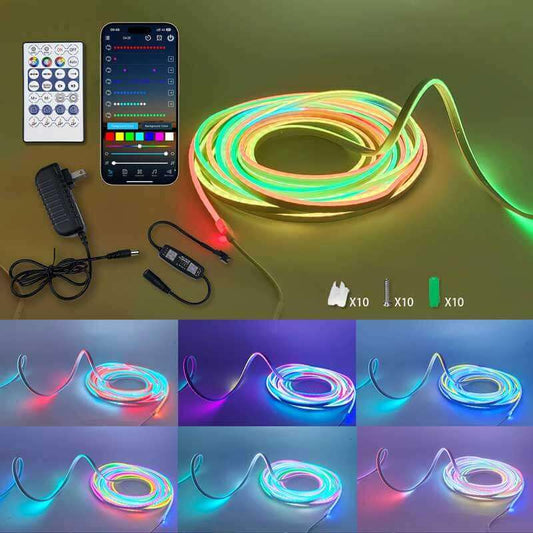What is the golden rule of lighting?
Share
The Golden Rule of Lighting is a fundamental principle in lighting design that focuses on achieving a balanced, harmonious, and visually appealing effect by using light in a way that enhances the functionality and aesthetic of a space. The golden rule often referred to in both interior and exterior lighting, is:
"Use light to create atmosphere, accentuate key features, and provide adequate visibility."
This rule emphasizes three main principles:
-
Atmosphere: Lighting should be used to set the mood and ambiance of a space. Whether it's soft, warm lighting for a cozy atmosphere or bright, cool lighting for a more energetic environment, the golden rule suggests that lighting should always contribute to the overall feel of a room or outdoor space.
-
Accentuate Features: Lighting should highlight and accentuate the key features of a space or landscape. This could include architectural elements, furniture, artwork, plants, or garden features. The golden rule suggests using lighting to make these elements stand out, adding visual interest and focus.
-
Adequate Visibility: Lighting should ensure that the space is functional and that people can see clearly. This applies to both indoor and outdoor settings. In outdoor lighting, for example, pathways, stairs, and seating areas should be adequately lit for safety, while indoor lighting should ensure that tasks can be performed effectively (e.g., cooking, reading, working).
How to Apply the Golden Rule of Lighting:
-
Layer Your Lighting: A key aspect of the golden rule is layering light in different forms. This includes:
- Ambient Lighting: The general, overall light of the room or outdoor space, which creates a comfortable level of brightness.
- Task Lighting: Lighting that is focused on specific tasks, such as reading or cooking.
- Accent Lighting: Lighting that highlights a feature or object, such as artwork or plants.
-
Control the Intensity: Different areas and activities require different light intensities. For example, a living room might need soft, ambient light, while a kitchen needs brighter, task-oriented lighting. The golden rule suggests using dimmers or multiple light sources to adjust the light level according to the purpose of the space.
-
Avoid Overlighting: The golden rule also advises against overwhelming the space with too much light. Overlighting can create harsh shadows, cause glare, or make a space feel uncomfortable. Instead, focus on creating balance with the right amount of light in the right areas.
-
Use Lighting to Define Zones: In larger or open spaces, lighting can be used to define different areas. For example, in a garden, you can use lighting to delineate a seating area, a pathway, or a focal point such as a sculpture or tree. This approach creates a sense of structure and visual interest.
Why the Golden Rule Works:
-
Enhances Comfort: Proper lighting creates a sense of comfort and wellbeing by providing the right amount of light in the right places. It ensures spaces are both functional and visually appealing, making them pleasant to spend time in.
-
Adds Drama and Depth: By accentuating key features, lighting can add drama, depth, and texture to a space. It can highlight architectural details or the beauty of a garden, making them stand out and creating a more visually interesting environment.
-
Promotes Safety: In outdoor and functional lighting, the golden rule ensures that light is used to make spaces safe. Properly lit pathways, steps, and seating areas help prevent accidents, especially in the dark.
Example of the Golden Rule in Action:
Indoor Lighting: In a living room, you might use ambient light from ceiling fixtures or wall sconces to create a warm, inviting environment. Task lighting could come from table lamps or under-cabinet lighting for reading or working. Finally, accent lighting could highlight a piece of artwork or a decorative plant, creating visual interest.
Outdoor Lighting: In a garden, the golden rule could be applied by using ambient lighting for general illumination, task lighting for areas like steps or pathways, and accent lighting to highlight trees, statues, or other garden features.
Conclusion:
The Golden Rule of Lighting is a simple yet effective guideline for designing lighting systems that are both functional and aesthetically pleasing. By focusing on creating atmosphere, accentuating features, and ensuring adequate visibility, the golden rule helps you achieve a harmonious balance in both indoor and outdoor lighting design. It serves as a foundation for any lighting project, whether you're designing a cozy living room or a beautiful garden.




